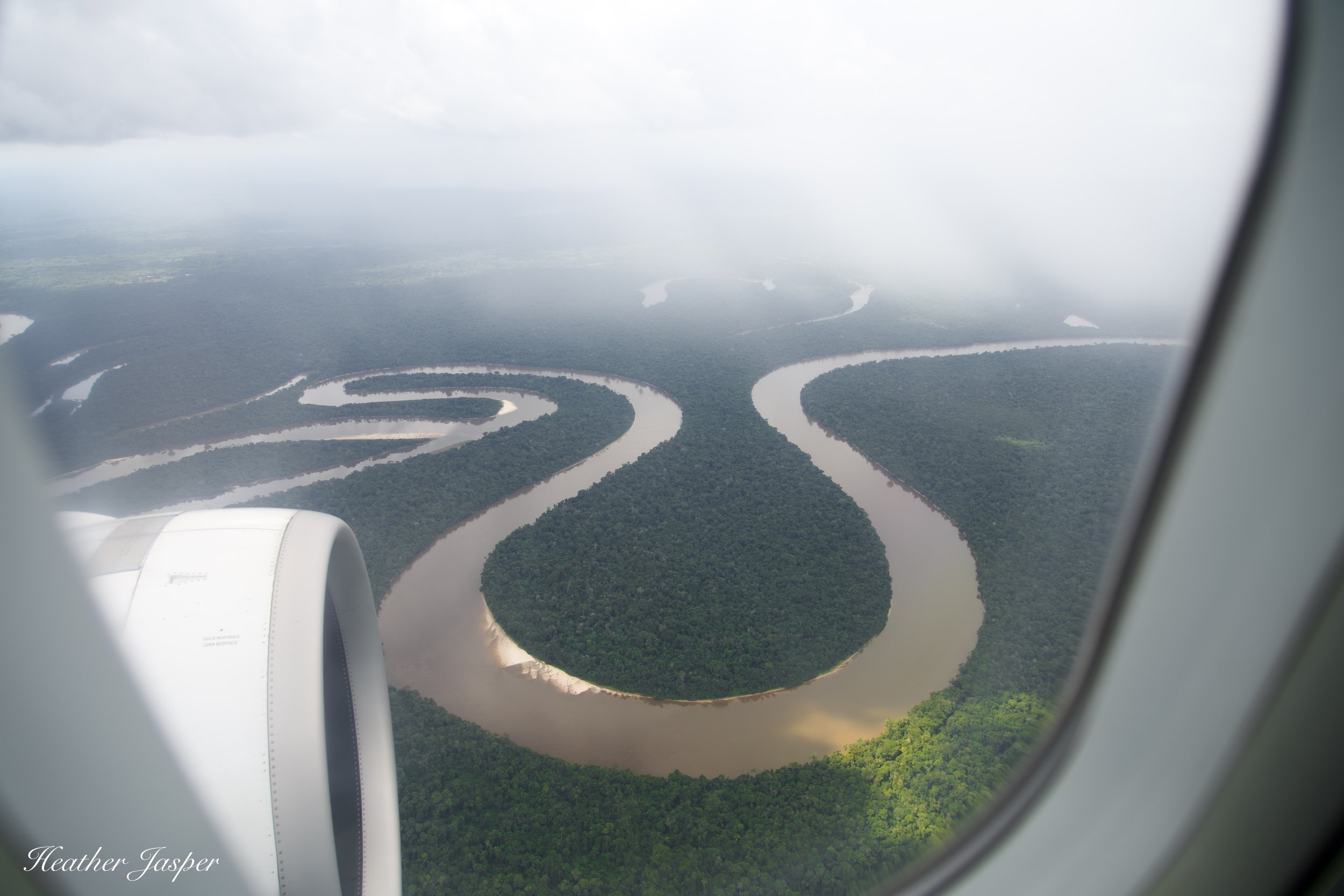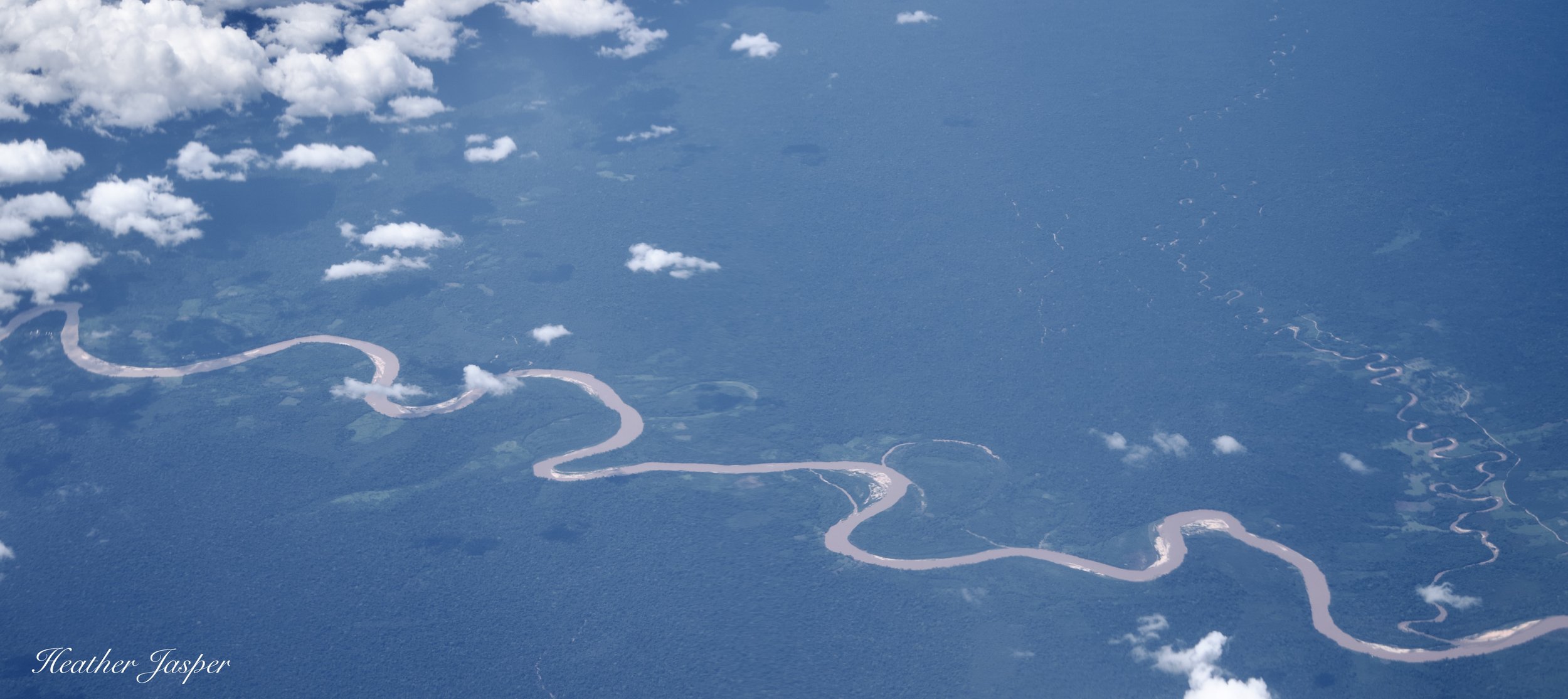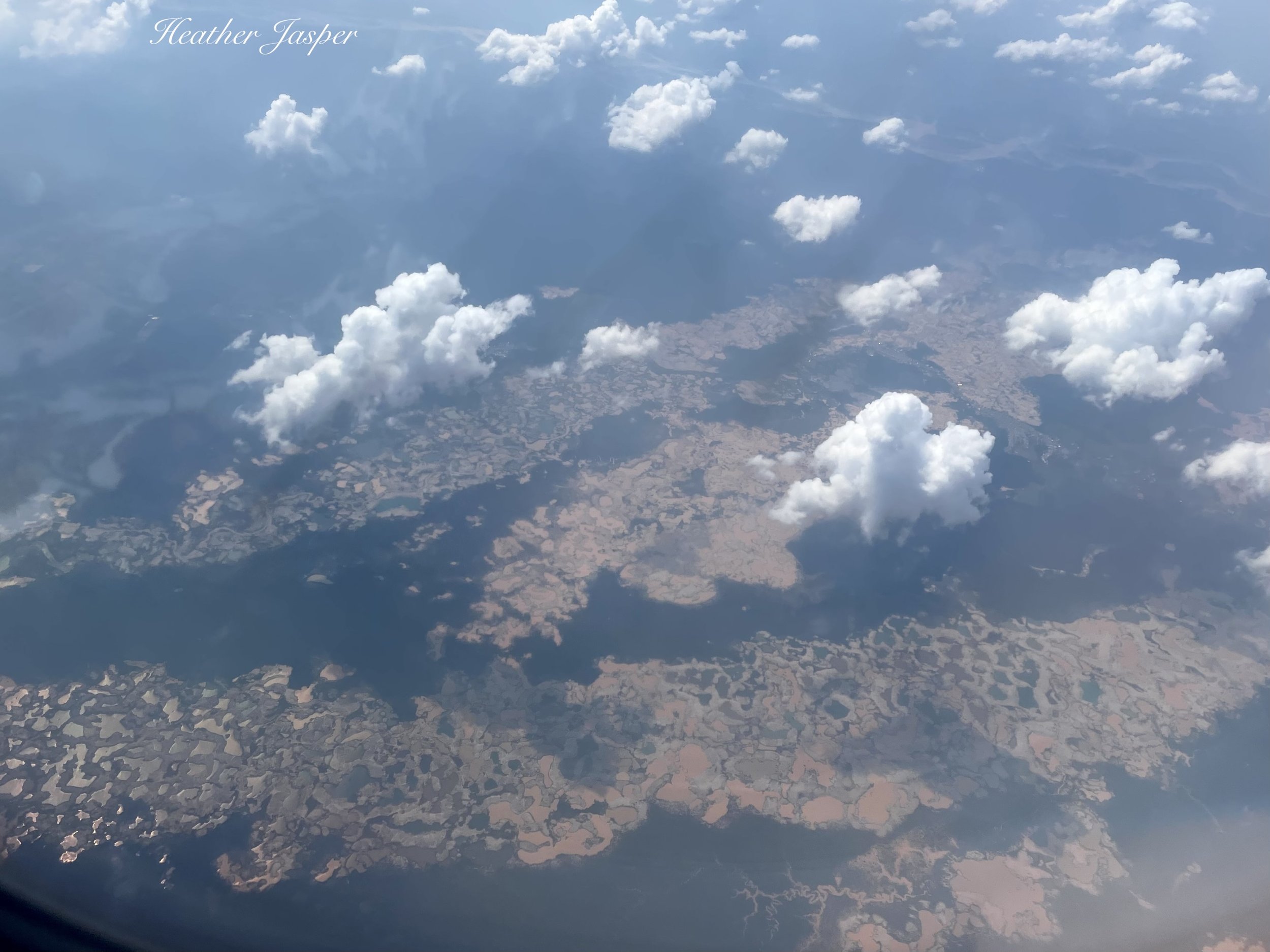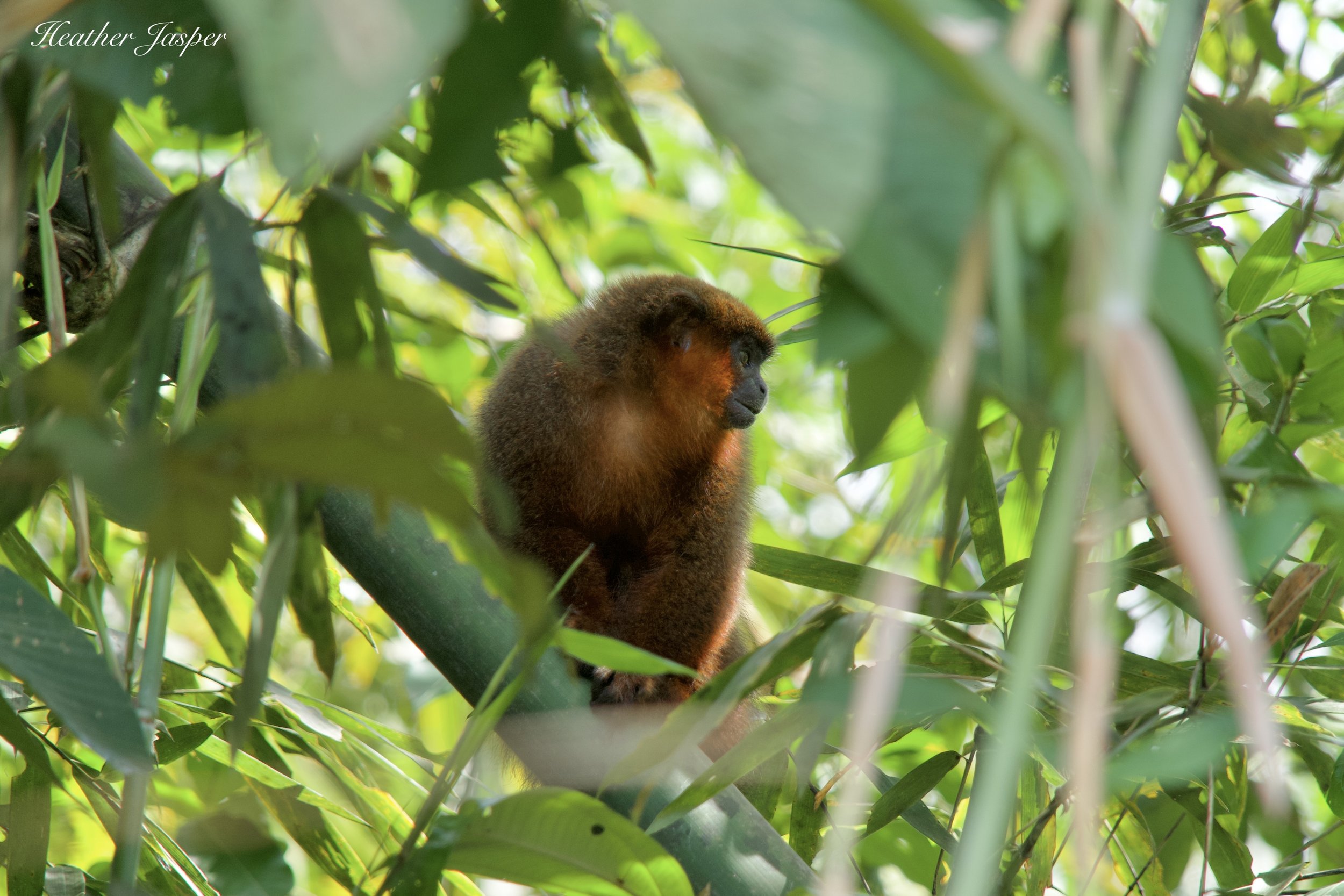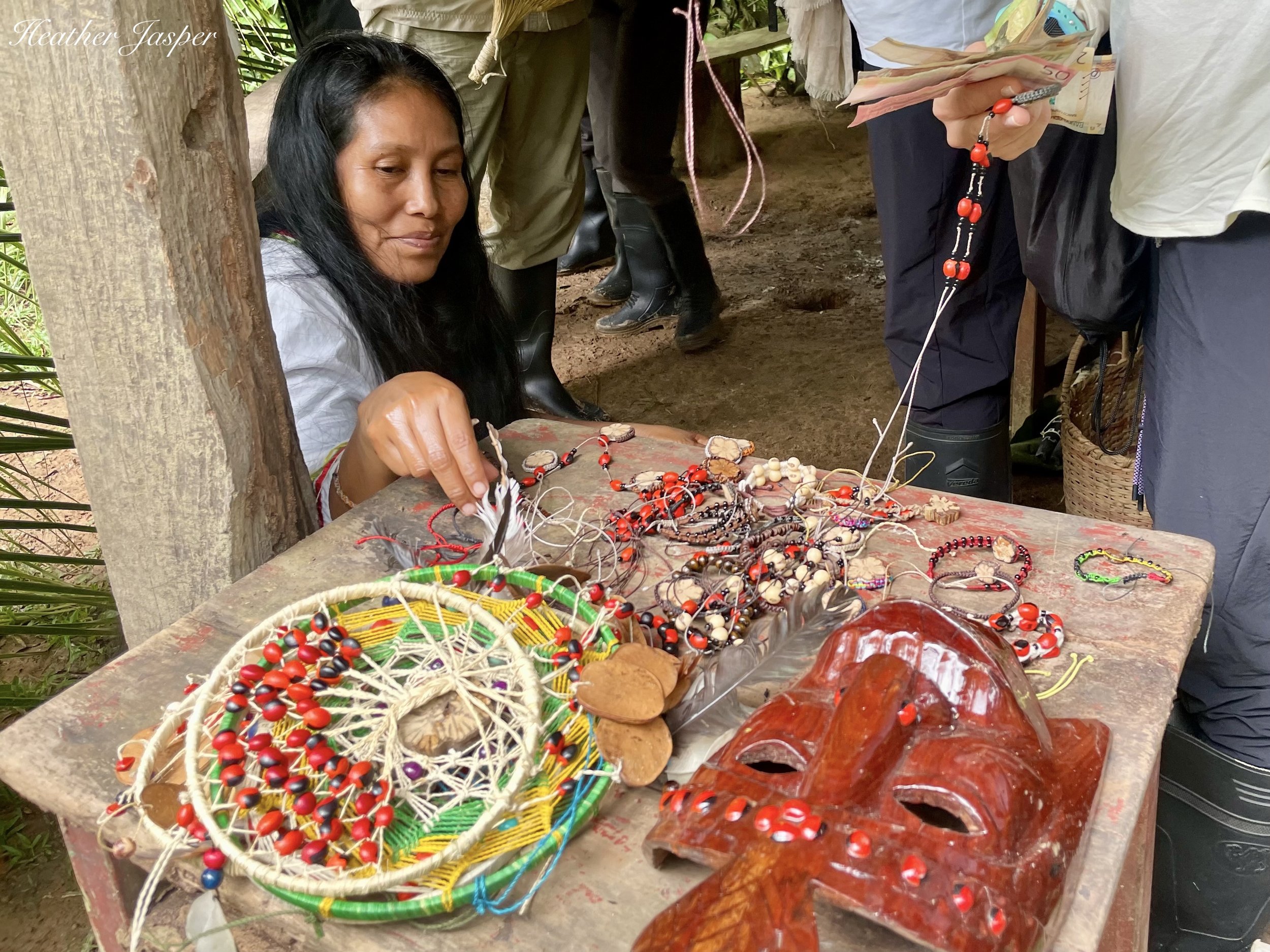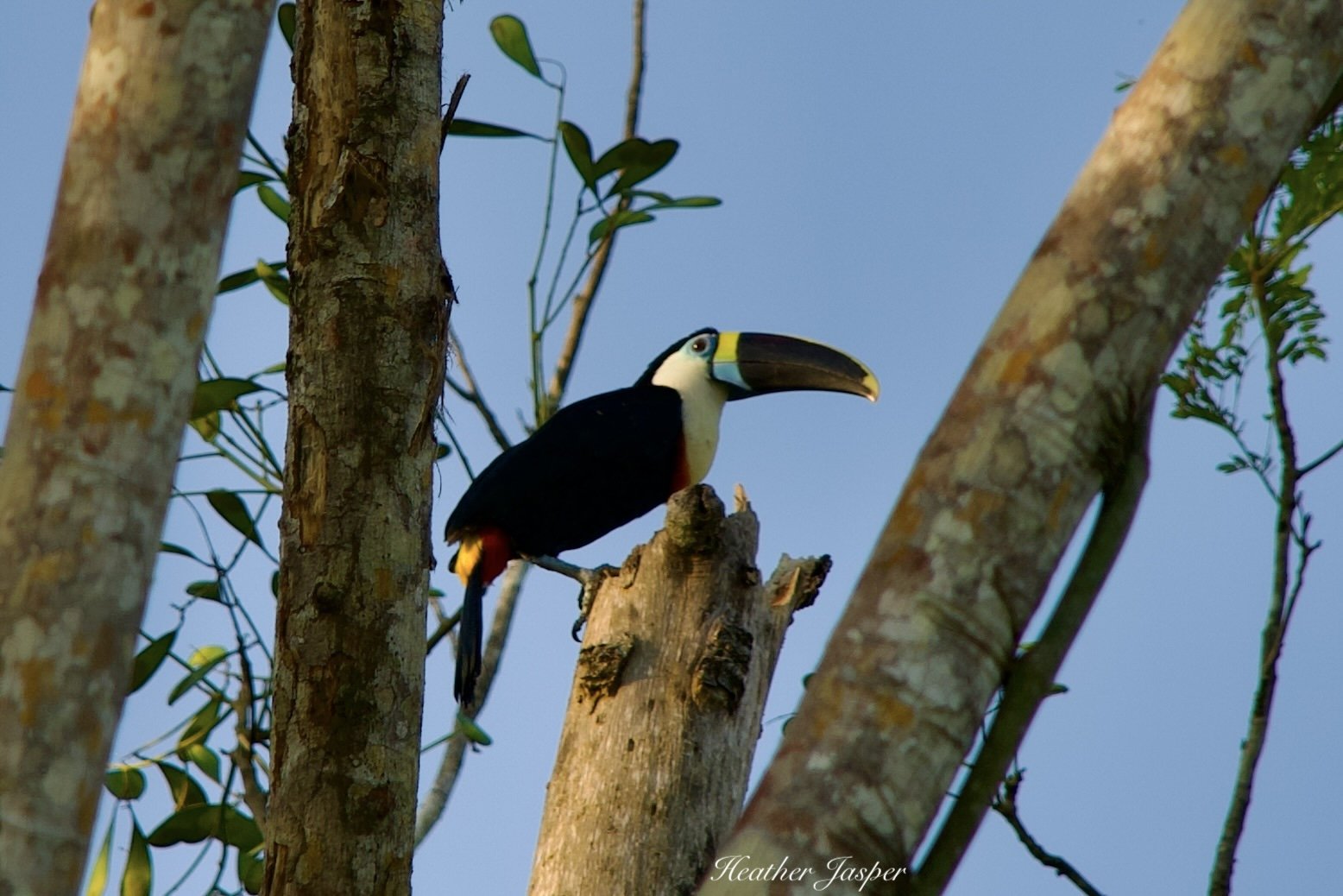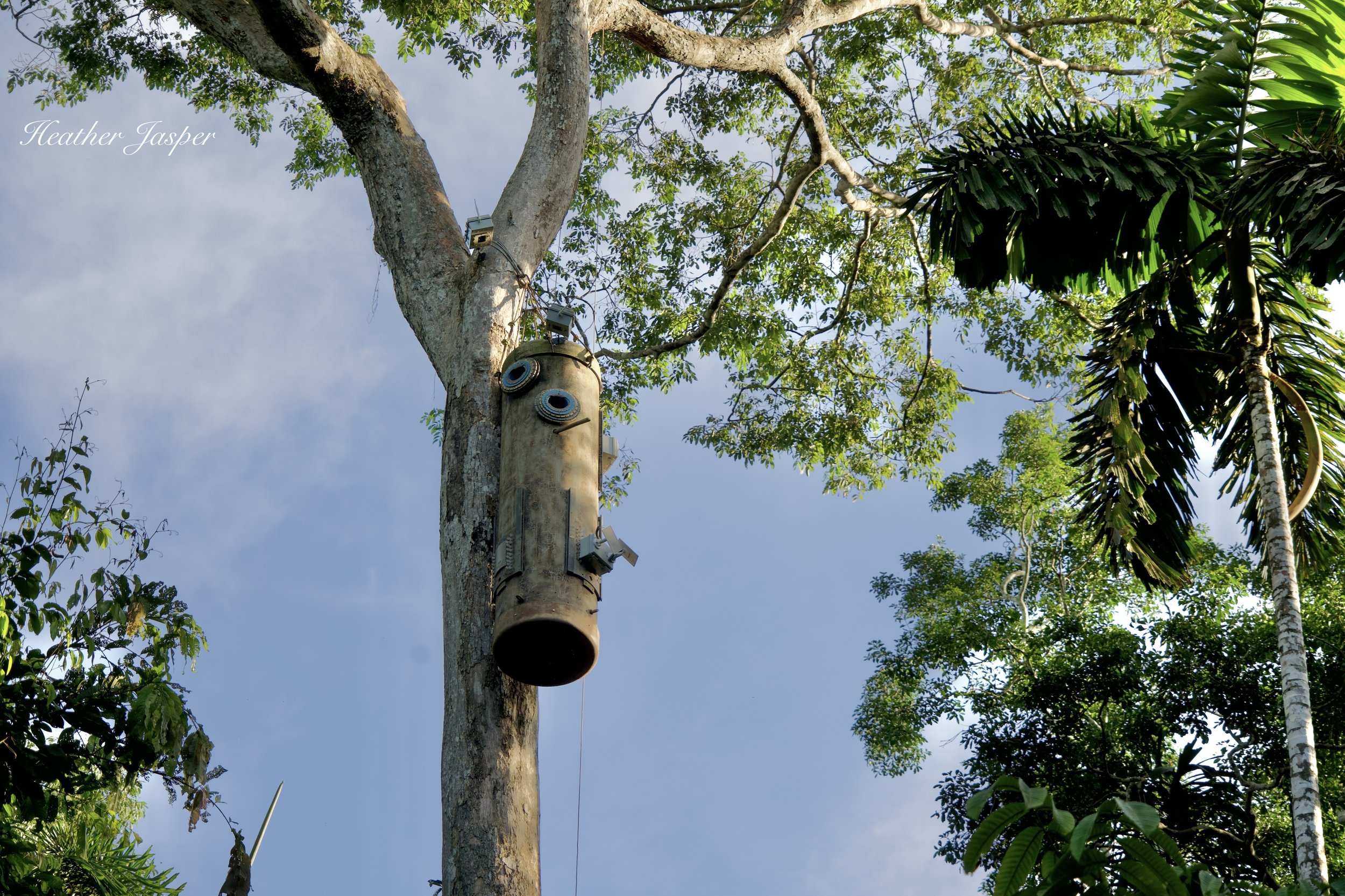Saving the Peruvian Amazon
Hundreds of tributaries flow through Peru on their way to join the Amazon River.
The Amazon River Basin stretches across eight countries.
Peru’s deforestation isn’t in global news as much as deforestation in Brazil, but it’s still a dire situation.
The main problem is a lack of enforcement. Logging and dredge mining may be illegal, but without budgets for police and other officials to enforce the laws, they mean very little. Many environmental protection laws in Peru look nice on paper but have little impact on what actually happens in the rainforest.
Corruption is a big part of the enforcement problem. The few police and other officials who are faced with evidence of deforestation are often easily bribed. Their salaries are not high enough to compete with the bribes that loggers and miners offer in exchange for allowing wood and gold to pass through checkpoints.
Healthy forest is a dense, dark green. The lighter stripes near the river are abandoned meanders.
Deforestation in the Peruvian rainforest is complex but has three main causes: logging, mining, and agriculture.
Problem: Logging in the Peruvian rainforest
Both clearcutting and selective logging of old growth hardwood are major problems. Many logs are floated down rivers and sold in neighboring countries. Rivers from the Peruvian rainforest flow into Ecuador, Colombia, Brazil, and Bolivia. All four countries are rapidly developing and have their own problems with enforcing environmental protection laws.
When roads are built, they offer a more efficient way to export logs from the rainforest. It’s difficult to staff checkpoints 24/7 to prevent transporting wood from the jungle, especially when exporters are prepared to pay bribes that are several times the staff’s monthly salary.
This graphic about gold mining is in the Puerto Maldonado airport, in southern Peru.
Exporting on rivers takes less energy than on trucks, since logs can be lashed together into rafts and floated down on the river’s current. However, it takes longer because the rivers are slow, have lots of meandering curves and there are a lot of places where logs can get caught on rocks or snags in the river.
Photo: Impact of logging on macaw population & artificial macaw nests
Dredges like this are so common that public transportation boats stop at them for workers to come and go.
Problem: Gold mining in the Peruvian rainforest
You won’t find gold nuggets in the rainforest, but most rivers carry gold dust from the Andes. Miners concentrate on flowing rivers and on the lakebeds of oxbow lakes, which were part of rivers until the river changed course, abandoning former paths, and forging new streams through the rainforest.
Mines in the rainforest bear no resemblance to mines in the mountains. Miners use dredges to suck up the silt from riverbeds, running it through sluices to filter out gold. This causes three main problems: river degradation, clearcutting, and mercury contamination.
Stagnant ponds spread out on both sides of what used to be rivers.
Problem: River degradation
Dredges that suck up the silt in rivers and lakes destroy fish habitat and spawning grounds. Most wildlife in the rainforest is dependent on fish in some way. Birds, otters and even bats eat fish. All mammals that eat birds depend on the fish that nourish their food. The ripple effect impacts all plants and animals in the jungle.
Dredges leave piles of gravel where once was healthy river and forest.
Problem: Clearcutting
Oxbow lakes eventually fill in and forest reclaims the area, so mining those old lakebeds required clearcutting anything that has grown over the area. The people who work on dredges also clearcut forest to build places to live near where they’re dredging. They clear land to plant crops and to raise livestock for food. They cut trees for firewood and to build with. Even a dredge with only three or four people working on it can cause enough deforestation to see in satellite images.
Every dredge employs several people, who all clearcut places to live and grow food.
Problem: Mercury contamination
Mercury is used to bind flecks of gold dust together. It’s easier to extract gold from dredges and sluices when mercury is mixed in. Unfortunately, it’s impossible to use mercury in mining without causing contamination in the rivers and lakes. People exposed to mercury suffer from muscle weakness, impaired speech, hearing and walking, lack of coordination, loss of peripheral vision and other debilitating symptoms. More research is needed on the effects of mercury on wildlife – though one such study is underway at Los Amigos Research Center.
Do not buy gold in Peru
There is no way to be 100% sure that gold in Peru was not sourced, at least in part, from the rainforest.
Problem: Agriculture in the Peruvian rainforest
The more people who move to the rainforest to work in either logging or mining, the more food is needed. Many people clearcut forest for subsistence farming, but there are also companies that clear even larger tracts of land to cultivate crops for export. When chemical fertilizers, herbicides and pesticides are added to this clearcut land, the environmental impact is even worse.
Toppin’s Titi Monkeys, like this one I saw at the Tambopata Research Center, are often captured from the wild to be sold into the illegal pet trade.
Problem: The pet trade
It’s a sad fact that wildlife in Peru is still frequently captured and sold into the pet trade. This is illegal and yet as unenforced as every other extractive industry in the rainforest. I’ve learned a lot about the pet trade at rescue shelters like La Isla de los Monos (near Iquitos in northern Peru) and Amazon Shelter (near Puerto Maldonado in southern Peru). If you can, please donate to these non-profits, which care for and release animals that police confiscate from smugglers.
Buying art in the jungle means artists don’t have to go to a city to sell and helps people stay on their land.
How to combat deforestation in the rainforest?
Solution: Indigenous people protect their lands
Loggers, gold miners and farmers in the Peruvian rainforest are almost always people who came from the mountains or the coast. Indigenous people are a tiny fraction of the people causing deforestation and much more often are the only ones defending the jungle from these extractive industries.
One of the best ways to fight deforestation is to support Indigenous people so they can defend their land. When paying government bureaucrats to protect the rainforest isn’t effective, those salaries should go to Indigenous people who live in the forest. They are the ones who are doing the hard and dangerous work of confronting loggers and miners.
Defending the rainforest is dangerous.
The people who export gold and wood provide their workers with guns and confronting them can be deadly. It takes courage and determination to fight them, as well as a deep commitment to protecting the rainforest.
Solution: Tourism provides employment
Gold mining is the best way to get fast cash in the jungle and logging is second best. It’s hard for anything to compete with those two for income, though many people would be happy to earn a bit less and have a job that’s not as dangerous. The problem is when there are no other options that pay enough to feed a family.
In many countries, when a new national park or nature reserve is created, the people who live there are kicked off their land. That’s rare in Peru, which means that most parks and reserves have human residents who need to make a living. Other than tourism, most jobs extract resources, causing deforestation and environmental degradation.
Jobs at places like Posada Amazonas are the best way for tourists to support people who live in the rainforest. Working as a guide, or in a lodge with the kitchen or housekeeping, is the safest way to earn a decent income.
Selling fuel from barrels like this is illegal. I saw several boats like this in broad daylight, so smugglers are clearly not afraid of being seen.
Solution: Bigger budgets for enforcement
One way to combat gold mining and logging is by enforcing the prohibition of selling mercury and fuel in the rainforest. Another is by staffing more checkpoints to prevent the export of gold, wood, and other resources.
These solutions require well-paid, trained, and armed officials who can’t be bribed. That’s a tall order for a country like Peru that suffers from political instability, corruption at every level of government and is often beholden to foreign companies that extract these resources. Plus, it has porous jungle borders with other countries where corruption is rife: Ecuador, Colombia, Brazil, and Bolivia.
Solution: Don’t get discouraged
The challenges can be overwhelming, but that doesn’t mean we can give up on protecting the Amazon. It’s been commonly called the world’s lungs for decades and we must protect what’s left for that to still be true.
A wild macaw stopped by the Tambopata Research Center while I was there.
What can you do?
Come visit the Amazon! Stay in an eco-lodge that protects the land around it. Visit Indigenous communities and buy their art. If you can’t travel to South America, donate to effective non-profits. Not all non-profits are effective and efficient enough for me to endorse, but the ones below have passed my personal inspection.
This non-profit supports three research stations where scientists do conservation work.
This non-profit funds research on wildlife and conservation in southern Peru.
This non-profit rehabilitates and releases monkeys rescued by police from the illegal pet trade.

